ellen ongkeko's film BOSES goes to u.p.
Ellen Ongkeko Marfil and Froi Medina's
BOSES
starring
Coke Bolipata
Julian Duque
Ricky Davao
Meryll Soriano
and
Ms. Cherry Pie Picache
A film about a reclusive musician and a battered child who come into terms with their past by sharing the gift of music.
Aug 4, Monday, 5pm at UP Cine Adarna
Tickets are sold at P70.
With a special violin performance by the lead child actor (Julian Duque) after the show.
For ticket inquiries, text 09174907697.
***
Cinemalaya's Boses offers hope, music for kids
JOHANNA CAMILLE SISANTE, GMANews.TV
07/17/2008
Through a peephole in a grimy kitchen cabinet, Onyok sees his drunken father stumble on his way to open the door. Angry neighbors accusing the father of child abuse barge in and search the room frantically, but Onyok, the seven-year-old child hiding inside the cabinet, is too traumatized to even flinch.
Finally one of the neighbors opens the cabinet door, sees the battered kid, and decides to take him to a rehabilitation center for kids – and for the next 90 minutes award-winning director-producer Ellen Ongkeko-Marfil (Mga Pusang Gala) takes the audience on a pleasant musical journey toward regaining faith in humanity.
Ongkeko-Marfil’s latest film, the Cinemalaya entry Boses which celebrated its Gala Night last July 16 at the Cultural Center of the Philippines Main Theater, is a heartwarming story of a boy and a man both scarred by tragic histories who found solace in each other and the music they create together.
Young musical prodigy Julian Duque plays Onyok, a mute abused child rescued from his drunkard father (Ricky Davao) and brought to a rehabilitation center for abused children operated by Amanda (Cherry Pie Picache).
Here Onyok meets a variety of colorful characters: the bully Enteng (Carl John Barrameda) who was once abused by his father and takes out bottled-up rage through bullying and therapy sessions; the friendly Shirley (Tala Santos) who almost always has a sunny disposition despite being a victim of sexual harassment by her own father; and the reclusive violinist Ariel, played by world-renowned musician Alfonso "Coke" Bolipata in his first major foray into acting.
Disturbed by his own past, particularly the death of student and girlfriend Bianca (Meryll Soriano), Ariel comes out of his shell when he sees Onyok’s musical talent. He volunteers to tutor the boy, who also gradually learns to trust another human being after being used as a human ashtray by his abusive father.
Bolipata, a seasoned performer but a relative newcomer in the acting field, was able to hold his own in his dramatic scenes with veteran Picache, who played his sister. But his best moments are the musical ones – Bolipata’s acting skills come off most naturally when his character Ariel is playing the violin with Onyok. The fascinated, approving looks he gives the child are effortless.
Bolipata also flawlessly maneuvers the movie’s musical direction: In one climactic scene where the young Onyok lets out all his rage after he and Ariel escapes the violent father, Bolipata’s furious playing firmly captures the intensity of their emotions and the bond that they now share.
Duque is the film’s brilliant discovery. He doesn't speak a word and rarely contorts his face to show emotion, save for an occasional small smile, but Duque’s piercing eyes can express joy or sadness with one look.
Indie film regulars
The story is essentially a drama, but in Ongkeko-Marfil’s deft hands you see the characters' pain without feeling that the scenes are overly maudlin.
To illustrate: "Sinasaktan din ba siya ng tatay niya? (Does his father also hurt him?)" was Shirley’s innocent question, her face unblinking, when she couldn’t understand why Ariel was so anti-social at first.
This treatment of sensitive topics is part of what made the film so warmly received by the audience on Gala Night. There are no long, grand speeches about child rights, because the actions of the characters speak for themselves.
It also doesn’t hurt that Boses has its fair share of comedic moments which made excellent use of good old Filipino humor, including one hilarious funeral scene.
Boses is a movie that speaks to audiences not just because of its good message, but because it communicates that message through excellent direction, fine portrayals, and beautiful music.
An Erasto Films production, Boses is presented in cooperation with the National Commission on Culture and the Arts, the Film Development Council of the
It has been adopted by Unicef, the Department of Social Welfare and Development, and the Council for the Welfare of Children-Secretariat as part of their campaign dubbed "Children Against Violence." - GMANews.TV
Listening to ‘Boses’
Rica Bolipata-Santos
July 28, 2008
By the time you read this, the winners for the Cinemalaya Film Competition will have been announced. There have been rumors about the quality of this year’s competition including chismis that someone important has declared “this is the best crop of films so far!” In the past, my only experience of being a participant of the festival was the desire to find the time to actually watch one of the movies. Happily, this year, I finally had the chance to watch.
I’ll tell you from the get-go it was not for purely unselfish reasons. My brother, Coke Bolipata, was acting in one of the movies. Entitled Boses and directed by Ellen Ongkeko-Marfil, Coke also took care of the musical direction of the film. More importantly, it was shot in CASA San Miguel in Zambales, an
The plot of Boses is simple. Coke plays Ariel, a down-and-out violinist escaping from a troubled past (and a permanent broken heart courtesy of Bianca, played by the luminous Meryll Soriano) into a hut in the province. Near his hut, his sister, played by the amazing Cherry Pie Picache, runs a shelter for children who have been abused by their parents called Kanlungan. Into the shelter’s care comes a young boy named Onyok, played by Julian Duque, a seven-year-old unknown who, in truth, is Coke’s real violin student. Abandoned by his mother, he has been brutalized by his father, played by the incomparable Ricky Davao, for years, causing him to injure his larynx and rendering him mute.
The story arc is easy to predict. Ariel and Onyok, both battered and bruised, will find in each other a twin, or a foil. The irony, really, is that communication between two people who cannot communicate in words (which one presumes to be one of the easiest ways, hinted at by the constant use of the line “ba’t hindi mo na lang sinabi sa akin?”) and have failed to communicate with people around them, can somehow communicate wordlessly. The first time Onyok hears Ariel playing through his bedroom window, the music brings him back to the memory of being in his mother’s arms. It is a precious memory that music is able to call forth and he begins to find solace in Ariel’s hut — beckoned both by music and the unarticulated feeling that Ariel is a kindred soul.
This is only fiction, of course, and film uses different elements to tell the story. Beneath the plot, conceived and rendered by veterans Froilan Medina and Rody Vera, are other artistic elements and this is really where the movie sets itself apart. Coke constantly plays throughout the entire film and you are given a concert without being really aware of it. Most of the film was shot using live sound so one can truly hear Coke playing. In other movies where actors play roles that require them to do something that requires a physical skill they lack, like playing golf or cooking, the acting often becomes so superficial it’s painful to watch.
But Coke is a violinist and a violin teacher and the natural in him comes out onscreen. One of my favorite scenes is when he tries to coax Onyok out of his cabinet by showing him the violin can be a bee, a horse, a cow, a rat. Onyok is hidden in a cabinet and the camera peers in and catches a rare smile on his face. Nap Jamir, a painter, is the film’s cinematographer, and you begin to realize that every scene has been conceived as if it were on canvas. Ellen’s sure direction, honed by years of filmmaking, orchestrates the entire show. At the premiere night, the audience was not shy in proclaiming its feelings about the movie, both shouting, laughing and crying at various times. In one scene, Ariel attempts to elude Ricky’s character and the audience collectively cheered, some people even rising from their seats! At the back of the hall was a row of foreigners and I wondered what they all thought of this Filipino brand of audience participation.
At the end, a rousing ovation was given the movie (the foreigners had risen, too) and the crowd started to chant Onyok’s name and Julian stood with pride and went onstage. Like Pacquaio at the end of a well-fought match, he stood at the center, crossed his arms and looked straight into the lenses of the cameras that had flocked around him. Standing far away, I knew that the audience recognized genius and was giving it its proper recognition.
After all the crying, clapping, and Kodak moments (of course I insisted I have a picture with Ricky!), the family moved on to have dinner together and here was another story. In the midst of wolfing down our hard-earned dinner (it was already 10 p.m. by this time and we had all been both tense and nervous, collectively as a family, as is our wont), we started to ask ourselves what we would have changed about the movie. There were many suggestions, of course, such as my opinion that the beginning perhaps might have been too long. My brother-in-law wondered why Meryll Soriano’s character had to suffer such a fate and if that particular plot line was helpful to the rest of the movie. My husband wondered if the audience thought it believable for Coke to be a down-and-out violinist, considering his present stature. My sister thought the final scene funny and would have wanted it to end on some other scene. Coke himself knew of other scenes that he felt should have been part of the movie but ended on the cutting floor. This particular part interests me because art, after all, should spur conversation; it should make people not only feel, but also think.
Let me be a college teacher here and answer what many of you might be actually asking at the end of watching a movie: What is the lesson here? I can hear my college students making fun of me, as they know I hate this question but it is a valid one and one that I wish to answer. It is this: more than the movie being about how wounded people can be; more than how terrible it is that people who should love us hurt us and can somehow still miraculously redeem themselves; more than the movie being about the ability to heal and the heart to strengthen; more than the movie about being able to let go of people and trusting in what you have taught them; the movie is about how healing can come from art.
I think there was no other place last week that could best represent this lesson more than at the
On the way back home, going down the stairs from the Nicanor Abelardo Hall to the Huseng Batute, dodging excited people, both young and old (sighted in the audience was National Artist Bienvenido Lumbera who was watching his second movie that night! His smile held such pride), realizing that the audience included everyone from matronas with the usual stiff hair, avant-garde artists in scarves and boots, artistas from mainstream cinema to colegialas on dates to students still in their uniforms, I stopped in the middle steps and enjoyed the energy abounding. Again and again, I am mesmerized by the Filipino brand of creativity and, more importantly, by the way we see art — as something communal, something shared and something celebrated together. Here, in our lovely country, the lines that divide fantasy and reality, art and Art, public and private, are messy. This is who we are, no apologies, no explanations needed. And that perhaps is Cinemalaya’s exquisite lesson for me.





ellen ongkeko marfil and julian duque
Labels: boses, cinemalaya 2008, ellen ongkeko












































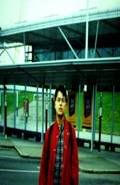




























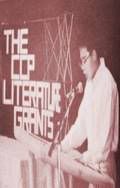


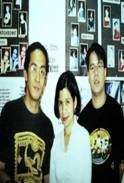


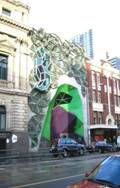



















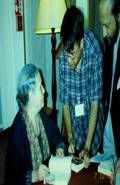
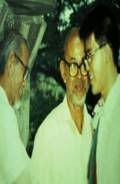



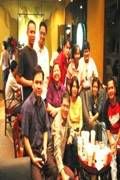

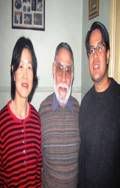
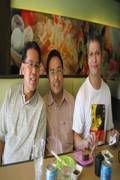

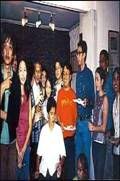
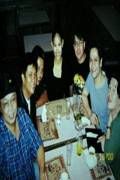

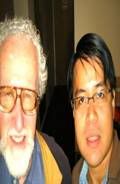


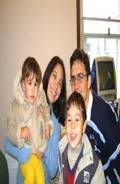



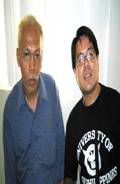

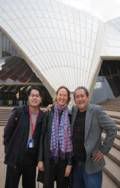
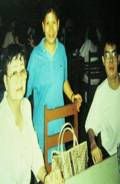

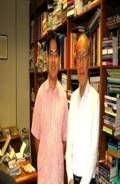
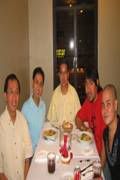


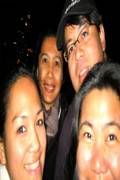
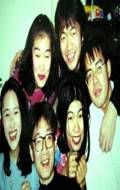
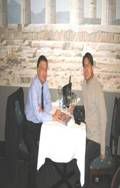







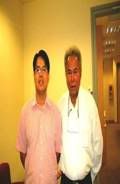

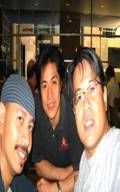
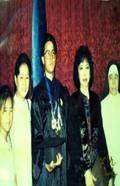


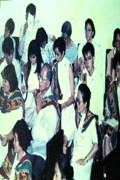
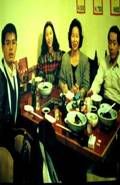
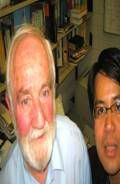







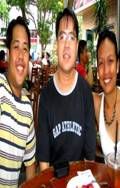

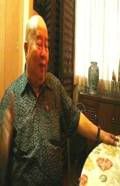











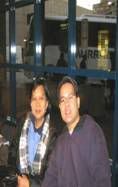

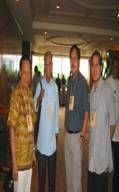
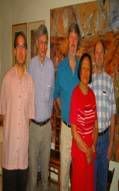
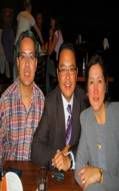


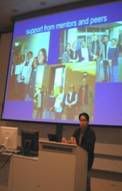
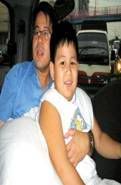
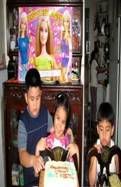
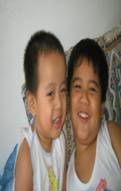




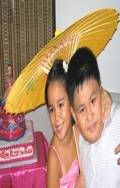









3 Comments:
I have a favorite CD on philippine movie theme songs. I really love it. The violinist is Alfonso Corpus Bolipata and the cellist is Ramon Corpus Bolipata. Are they related to this Coke Bolipata in the movie "Boses"?
jaime, ramon and alfonso are all siblings. alfonso is coke, the violinist-star of the movie.
The story is very heart touching!
I want o watch this one.
Thanks for sharing...
Post a Comment
<< Home